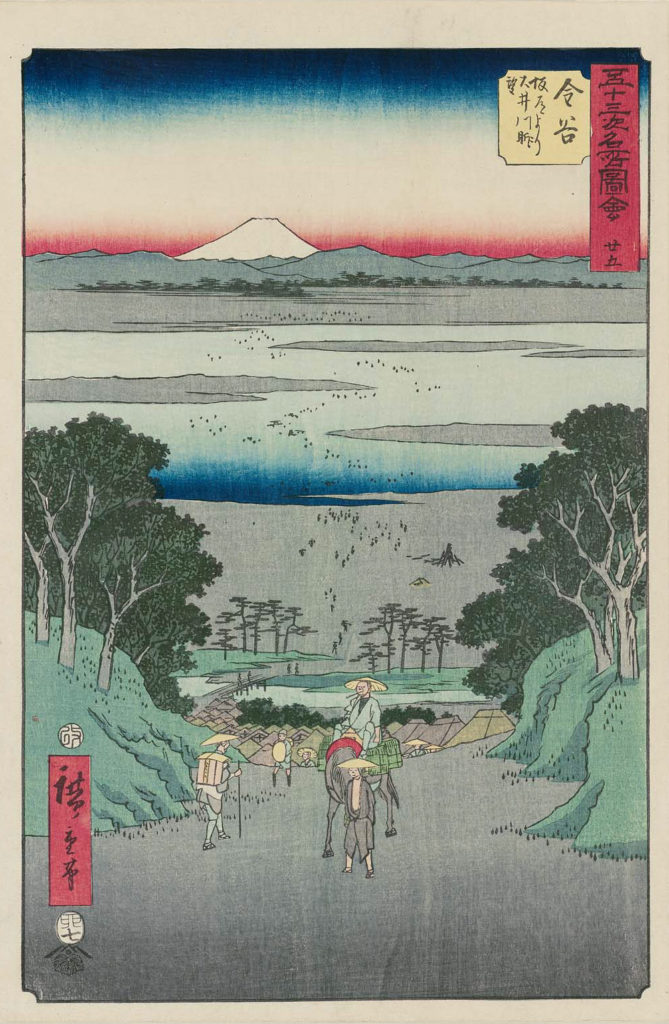Approximately five hundred kilometers in length, the Tokaido Road spanned a variety of terrain from coastal towns to towering mountains. On average, it would take a traveler two weeks from the starting point at Nihonbashi Bridge in Edo (Tokyo) to the end point, the Sanjo Ohashi Bridge in Kyoto. Historically, travel along the Tokaido was predominantly on foot.
The photograph of two anonymous figures, dressed in traditional peasant garb, passing each other on a mountain road is reminiscent of the scenes of everyday peasant life depicted in Japanese prints. The Ukiyo-e artists often portrayed the figures of travelers and their activities against the striking landscape of Japan and it is clear that Wright delights in this unexpected encounter on the road and its evocation of the figures that populate the prints.


